of the ROSS VERLAG MOVIE STAR POSTCARDS AND OTHER VINTAGE EUROPEAN POSTCARD PUBLISHERS website.
 RPH 3240/1 |
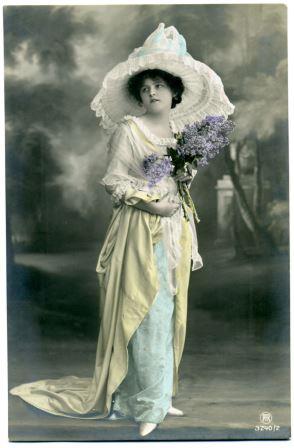 RPH 3240/2 |
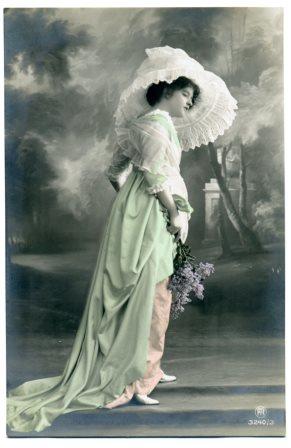 RPH 3240/3 |
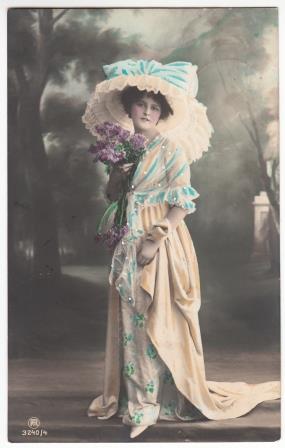 RPH 3240/4 |
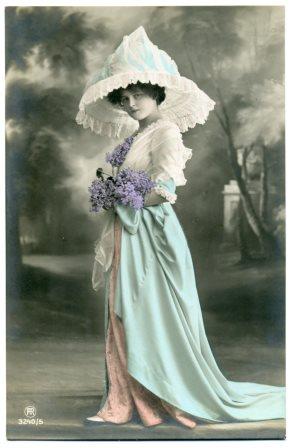 RPH 3240/5 |
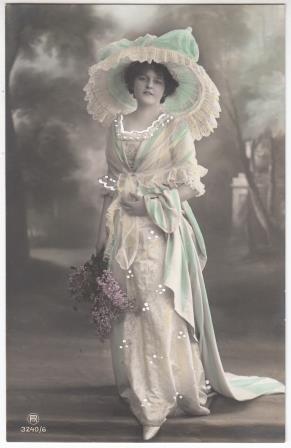 RPH 3240/6 |
During the years of 1902-1929, the Rotophot Berlin company issued tens of thousands of photographic postcards in numeric series, with each series comprised of multiple individual cards. Within a series, cards are marked with a Rotophot logo, a series number, and a card number. (A number of cards issued prior to the 'series' cards have been identified. An incomplete collection of these early Rotophot cards is available in an Early Series catalog.)
The pattern of individual card numbers within the earliest series (52-100) has not yet been identified, with card numbers switching from the 2000s, to 7000s, to 8000s for no obvious reason. Starting at series 101, individual card numbers begin with 3001 (instead of just “1"), resulting in the numbers 101-3001, 101-3002, 101-3003 through 101-3008. Series 102 continues sequentially with 102-3009, 102-3010, 102-3011 etc. This carries on up to around series 817 where individual card numbers end at about 7150 (for example S. 817 – 7146). Beginning around series 818, card numbers within a series change to the standard 1, 2, 3 pattern (818/1, 818/2, 818/3 and so on) for each individual series, not continuing sequentially.
The number of cards within a series varies for the early series. Around the 800 mark, however, the number of cards per series becomes more standardized, with most series comprised of six cards. A few series vary from that norm, such as those based on the Months of the Year. Within the digital catalogs, only one card per series is shown as an example. The other cards in a series are generally different poses of the same scene, with the same model, apparel, props, and scale. For example, the pictured 3240 series is comprised of six cards showing the popular RPH model, Wally, in different full-length poses: 3240/1, 3240/2 ... 3240/6.
This digital catalog of Rotophot’s numeric series has been compiled over many years of collecting, by scanning images from several personal collections and by capturing card images from internet sales and auction sites. Images have also been retrieved from a number of other on-line sites such as Pinterest and the University of Osnabrück's Historische Bildpostkarten. In providing these on-line digital catalogs as a resource to collectors worldwide, there is no intention to infringe on any copyright. If there are any objections to any of the images that are posted (a few of which bear watermarks), please let us know so we can correct the problem.
| Series 52-999 | 1000 Series | 2000 Series | 3000 Series | 4000 Series | 5000 Series | 6000 Series | 7000 Series |
Rotophot Berlin Logos
During the earliest years of production, the logo appearing on Rotophot's numeric series was modified several times. The first card seen to date is Serie 52-2013, where the word "Serie" is spelled out. The word "Serie" was changed to "S" around the 200 series, and a round logo was added. Circa 1908/9, near the 1340 series, the "S" was dropped, and the logo was standardized to a round RPH logo with the series number/card number printed under it.
 |
 |
 |
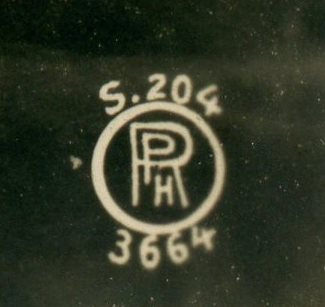 |
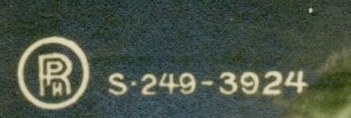 |
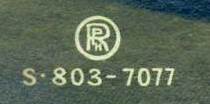 |
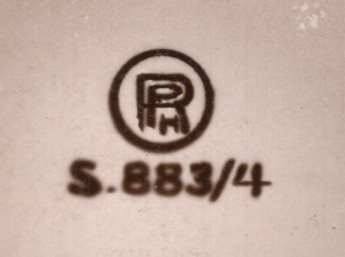 |
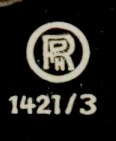 |
Rotophot Affiliates
The Rotophot firm had a number of affiliates throughout Europe, several with their own logos and card numbering systems. Looking at the cards gathered to date, there doesn't appear to be much (if any deliberate) overlap in the same series being issued by both RPH and one or more of its affiliates. That said, there is MUCH in common among the cards within the Rotophot family.The RPH-Ross affiliate (Ross Bromsilber Vertriebs-Gesellschaft mbh Berlin) was established in early 1907 and was a distributor of a large number of Rotophot cards in series numbered 2000 to more than 5000. The numbering system used by RPH-Ross is similar in appearance to the Rotophot numbering system (2018/1, 2018/2, 2018/3, etc.); however, matching numbers between Rotophot and RPH-Ross cards do not correspond date-wise. For example, Rotophot series 856 and RPH-Ross series 2018 feature the same model from the same time period, dating both cards to 1907. Similarly, New Year's series for 1911 are at RPH 2553 v. RPH-Ross 2492; 1912 at RPH 3119 v. RPH-Ross 2709; and 1913 at RPH 3528 v. RPH-Ross 2926. Because the RPH-Ross image catalogs are less complete than the Rotophot catalogs, a more comprehensive date analysis (such as that provided in the Dating Rotophot Series section below) has not yet been completed for the RPH-Ross cards. The catalogs, however, are provided:
| RPH-Ross 2000 Series | RPH-Ross 3000 Series | RPH-Ross 4000 Series | RPH-Ross 5000 Series |
Postcards issued by other affiliates are not included in the digital catalogs.
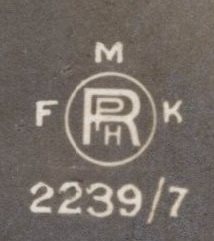 RPH-FMK Rotophot - F. Manger, Koeln |
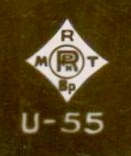 RPH-RMTBp Rotophot - Hungary |
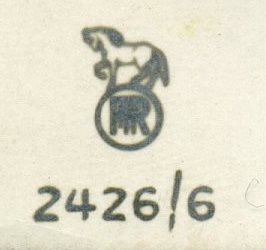 RPH-Ross Ross Bromsilber Vertriebs- Gesellschaft |
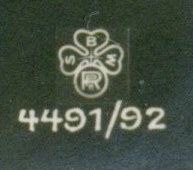 RPH-SBW Rotophot - S. Blueh, Wien |
Identification of these affiliates was made with help of Helmfried Luers, editor of The Postcard Album website.
Other Rotophot Postcards
In addition to issuing postcards in numbered series, Rotophot regularly issued cards outside that numbering system. A few sample cards are reproduced below. With varied topics, they most often have no series number, only a card number.
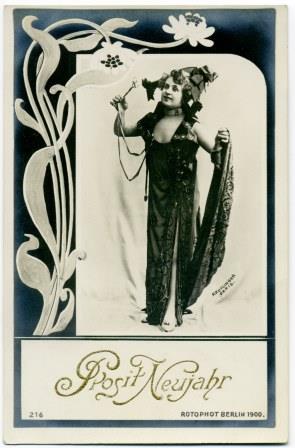 Rotophot Berlin 1900 216 |
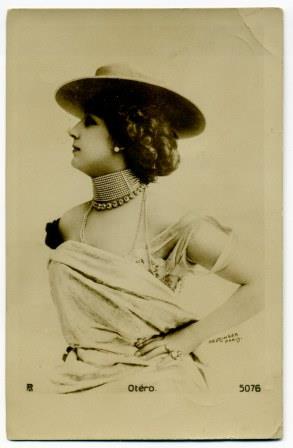 Actors RPH 5076 - Otéro |
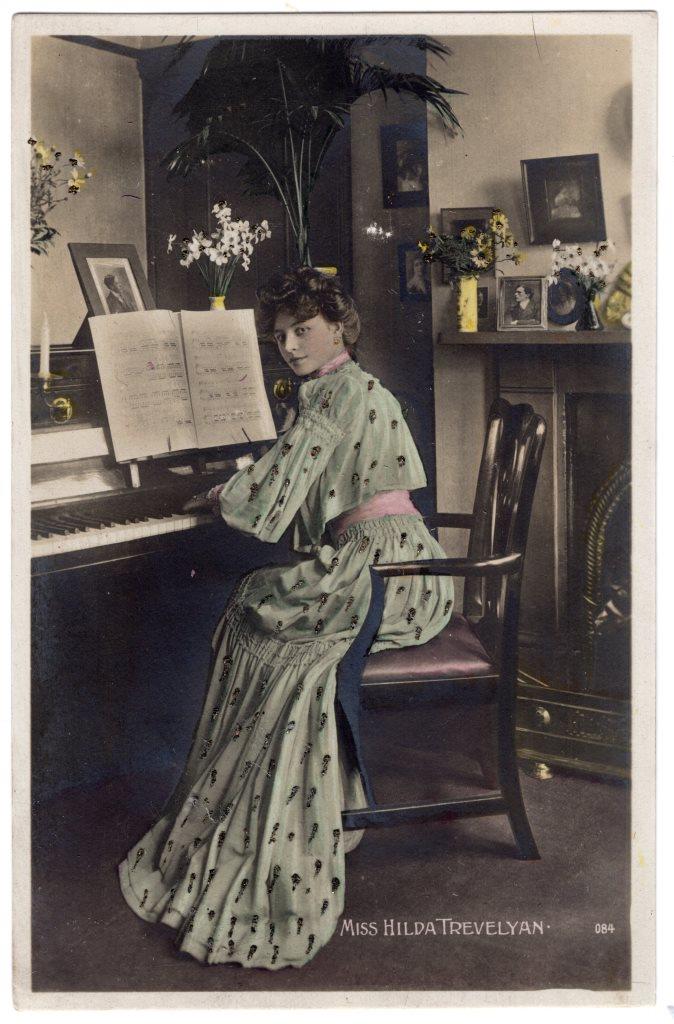 British Actors 084 - Miss Hilda Trevelyan Rotophot Logo on Reverse Side |
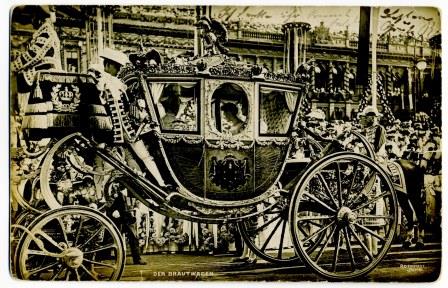 Royalty Der Brautwagen (Kaiser Wilhelm) |
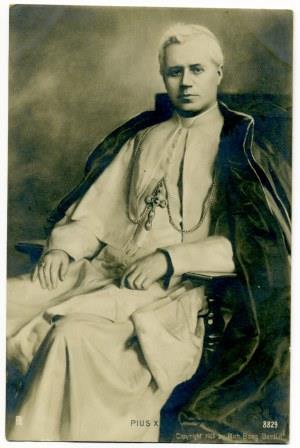 Social Figures RPH 8829 - Pius X |
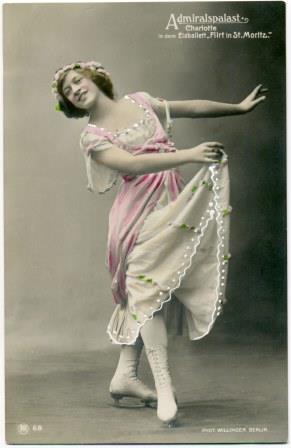 Admiralspalast RPH 68 |
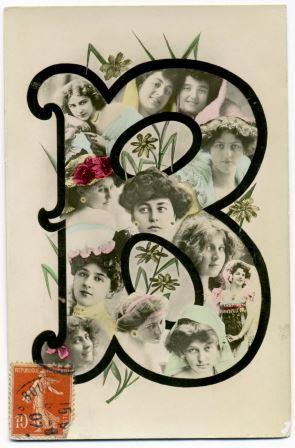 Alphabet Series |
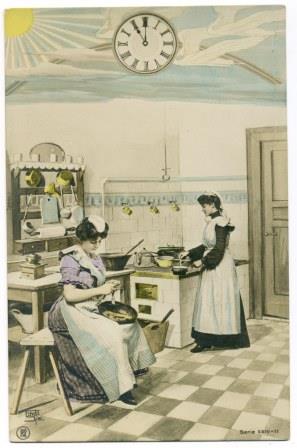 Hour of Day RPH Series XXIV-11 |
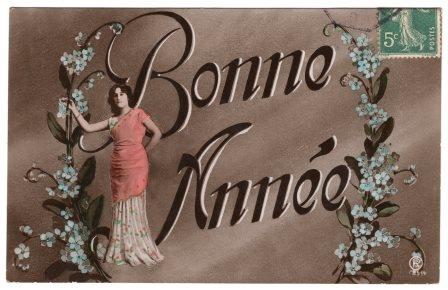 Montage RPH 8514 |
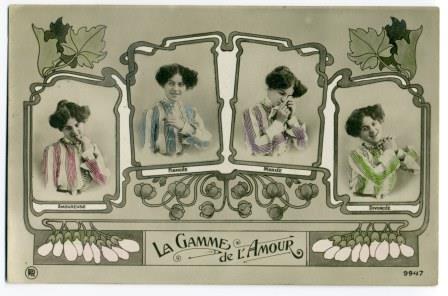 Montage RPH 9947 |
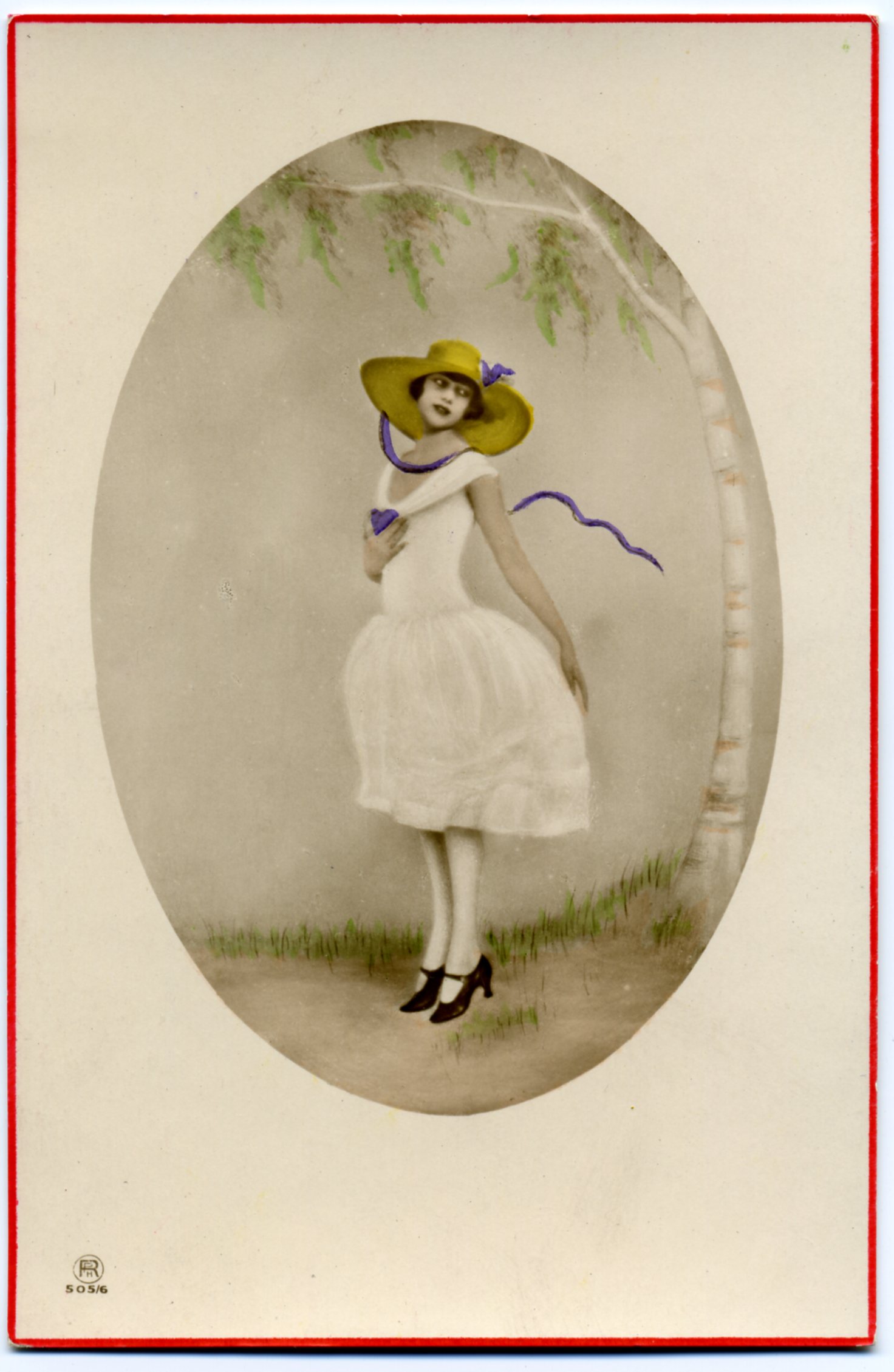 Deco Art Cards RPH 505/6 |
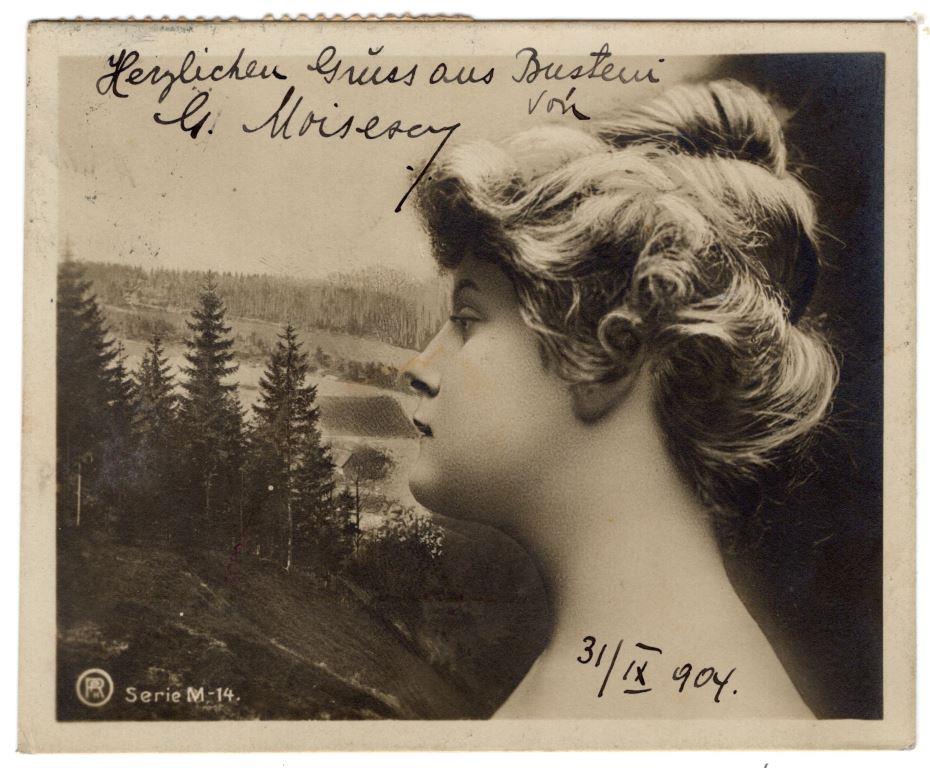 M Series (M-14) (Small Format) |
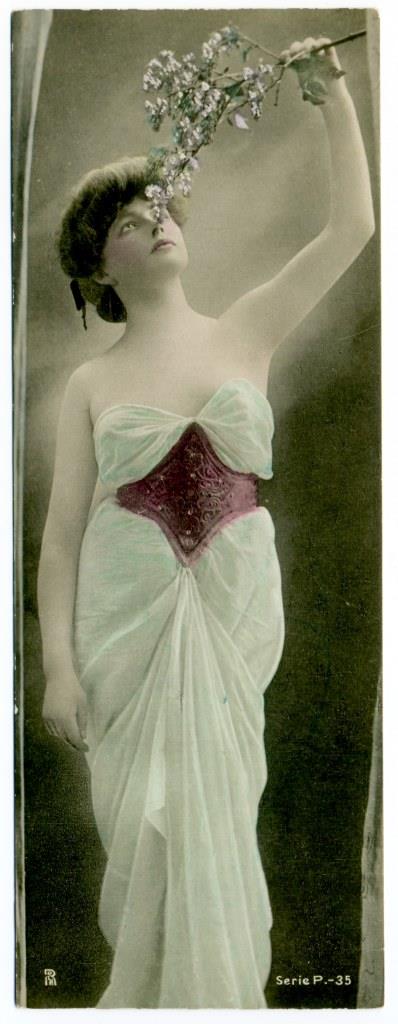 P Series (P-35) (Bookmark Format) |
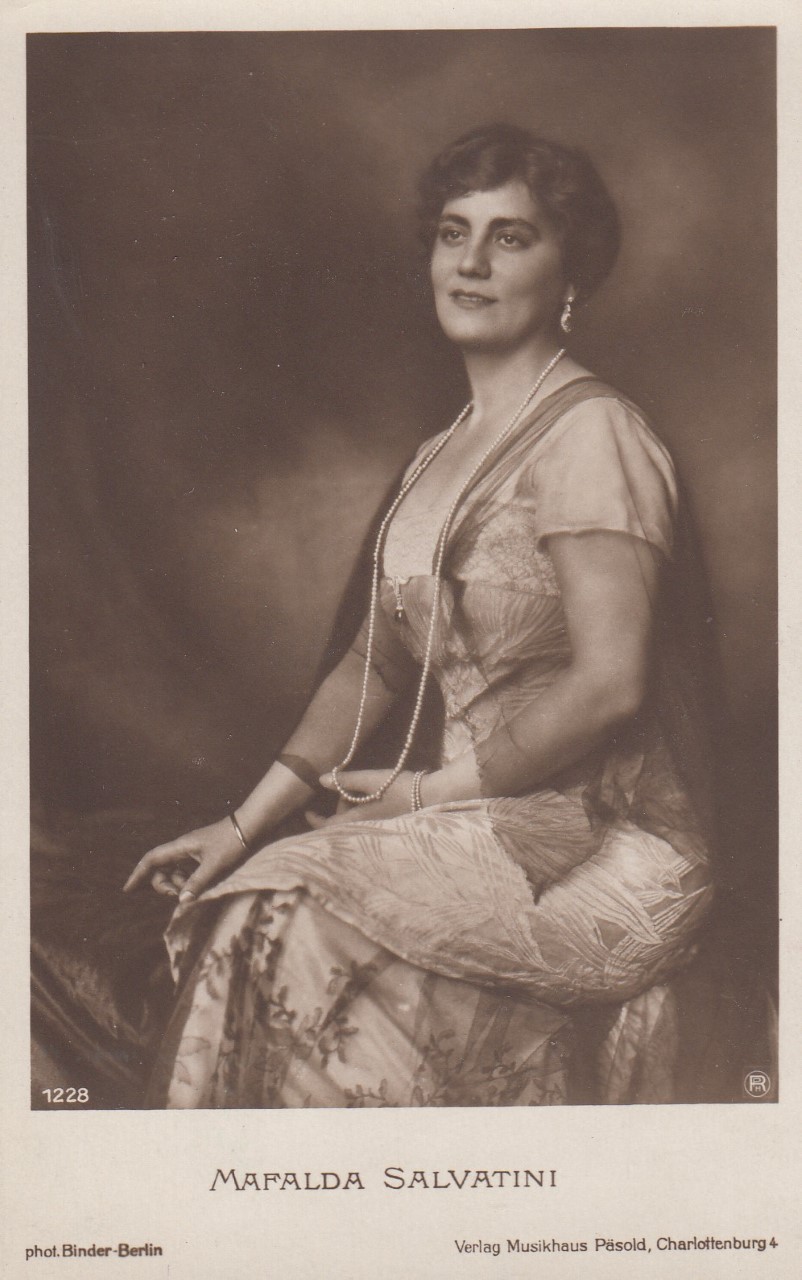 Opera Singers RPH 1228 |
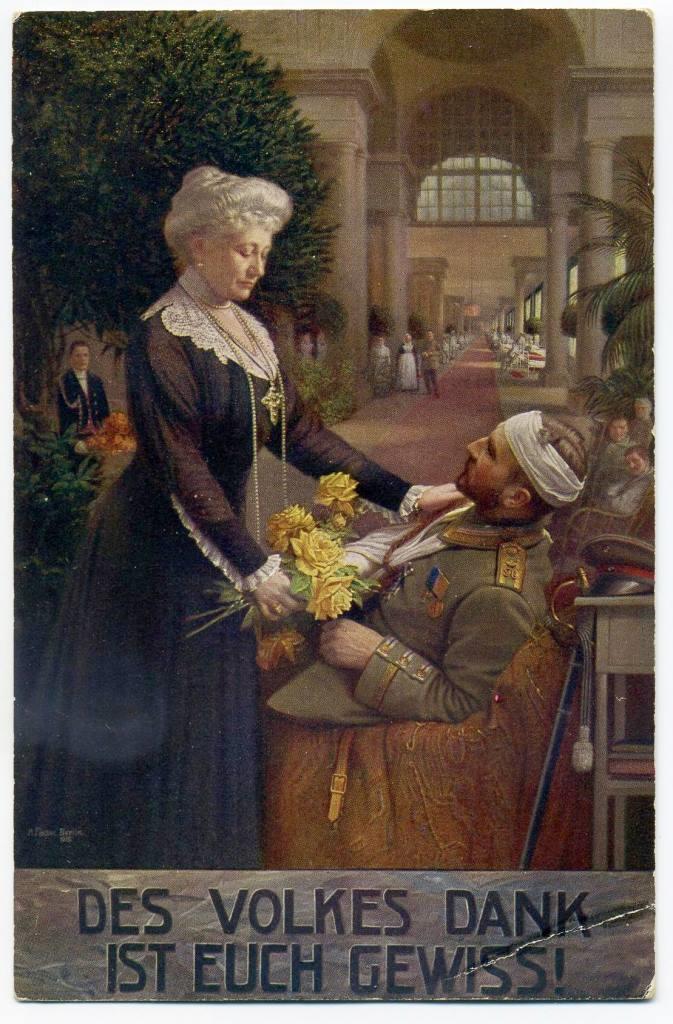 Hofmalers Art. Fischer #3 |
Actors and Others Appearing in the Series
While many of the models appearing within Rotophot's numeric series remain unknown, a good number have been identified, either through name stamped cards within the series or by materials released in other publications. Where identifications are available, notations have been made on the associated catalog entries for the cards. With rare exception, little can be learned about the models even when a name is available. Narrative sketches have been written from the information found. Within the narratives, all translations of foreign language materials into English are approximations.Coloring Methods
Issued before the prevalence of color photography, the RPH series cards were produced in monotone, most often in a black, sepia, or blue (Delft) tone. Less frequently produced were tonal cards in rust (rotton), green, yellow, purple, and even red, with a number of examples in the 4000 series. Variations in the tonal color were, most likely, achieved by the manipulation of chemicals during the printing process.
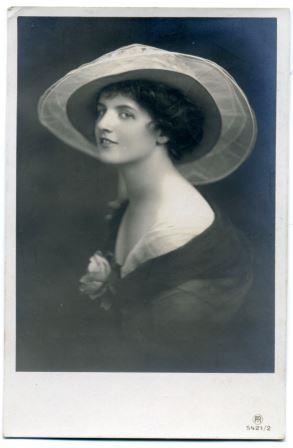 RPH 5421/2 |
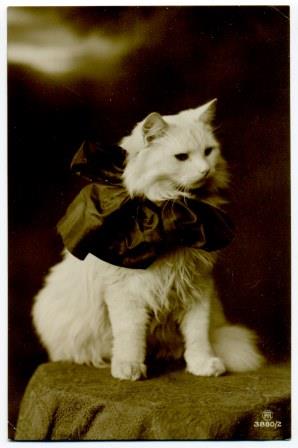 RPH 3880/2 |
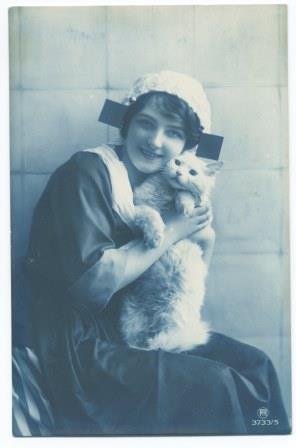 RPH 3733/5 |
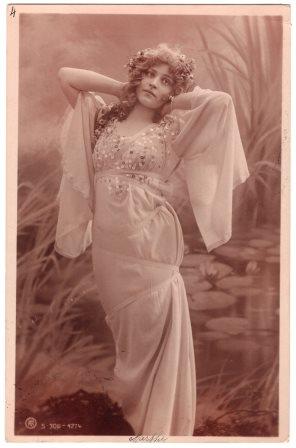 RPH S. 306-4274 |
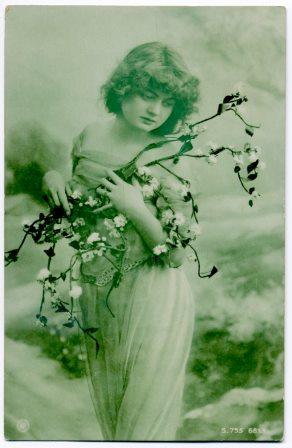 RPH S.755 6813 |
After the cards were printed, the addition of color tinting to the monotone cards was done by hand. Little is known about the methods used, but judging from the consistently high quality of coloring within the RPH series, Rotophot most likely employed a studio of artists who were responsible for the hand tinting. In their 1989 book, Handtinting Photographs: materials, techniques, and special effects, Martin and Colbeck describe card production in Britain, and the methods they describe may be similar to those in place within Rotophot Berlin:
"Prior to the First World War [Valentine and Sons Limited] employed over 600 people and used 50 printing machines. There were different departments for each of the processes involved: handtinting, glazing, plate making and so on. Over 40 artists were involved in the preparation of cards.
"A stencil process was also developed to help in the colouring of areas of the cards, but by and large the process was still very labour intensive. Francis Frith and Company used a large team of women workers to handtint their cards by stencil process. Master stencils were made for each of the different colours on a postcard from which cardboard stencils were made. A team would be issued with stencils and ink rollers for a particular colour and they would set to work on the base printed card. When the colour had been handtinted on all the cards, they went to the next team for an application of a different colour until the postcard was completely coloured."
Whatever method used, the colors applied did not necessarily represent reality. Series 5532 is a particularly vivid illustration of the artistic license taken in the application of colors, with the model's dress changing color from card to card. Also changing color within the series are the flowers in the window and the pad on the chair seat.
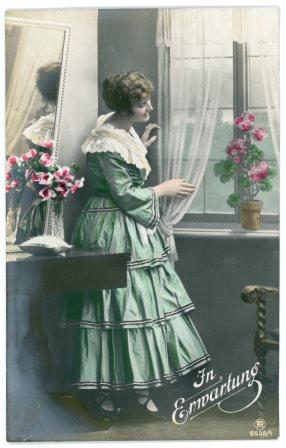 RPH 5532/1 |
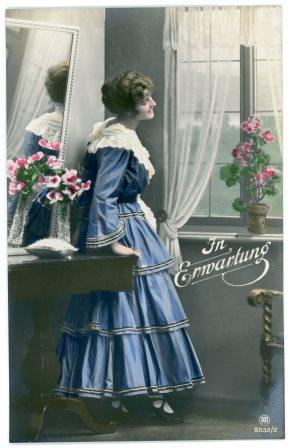 RPH 5532/2 |
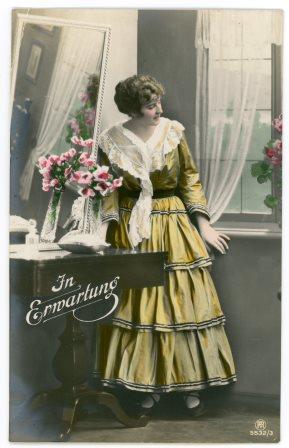 RPH 5532/3 |
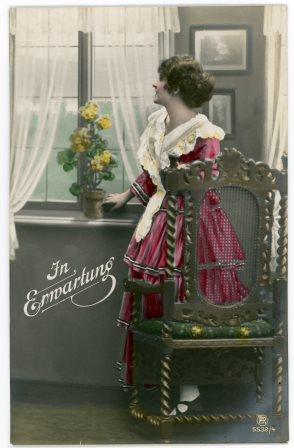 RPH 5532/4 |
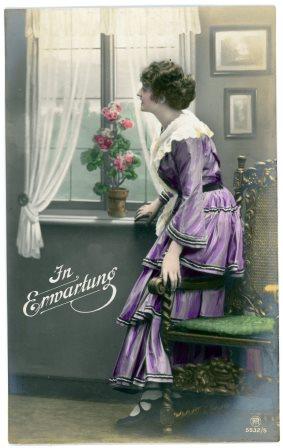 RPH 5532/5 |
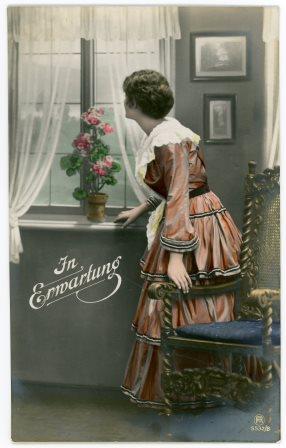 RPH 5532/6 |
Exceptions to the handcoloring of monchromatic cards are the series at 1001-1099 which were printed from early color photographs and are marked as Miethe Naturfarben series. Describing the series, metropostcard.com notes: "[Dr. Adolph Miethe] contributed to many important advancements in photography. He made the first telephoto lenses for cameras, improved on panchromatic films, and with Johannes Gaedicke invented magnesium flash powder. In 1903 Wilhelm Bounphol built a trichrome camera based on Miethe's scientific work capable of exposing the same scene to three different panchromatic negatives through different colored filters. Each negative could then be exposed to a different plate in the printing of postcards with the resulting image displaying the actual colors of the scene without the need of retouching. These German made tricolor cards were often labeled Original Miethe Naturfarben Postkarte."
Unlike the logo and numbering standard within the monochromatic series, series information for the Miethe cards is printed on the back of the card. Despite the differences between the Miethe cards and the monochromatic series, the Miethe cards are included in the digital catalogs because no non-Miethe series has yet been found in the numbers ranging from 1001-1100. A Rotophot advertisement for Miethe series 1001 - 1013 was printed in the Juni 1904 issue of Hochschul-Nachrichten.
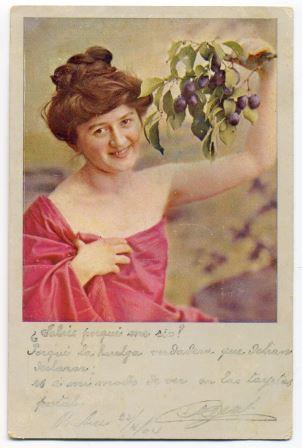 RPH 1005 Miethe Naturfarben Unter blüten und früchten |
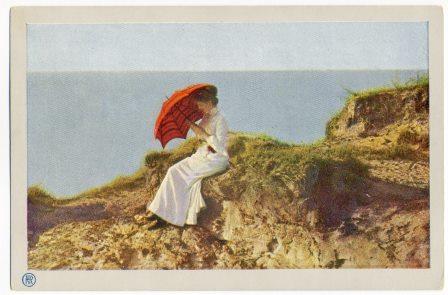 RPH 1015 Miethe Naturfarben Strandidylle |
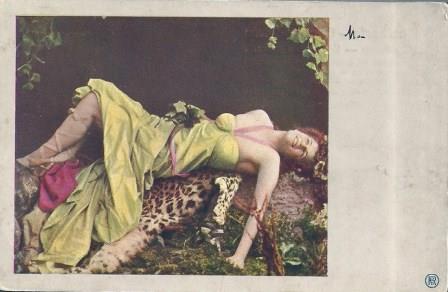 RPH 1017 Miethe Naturfarben Bachantin |
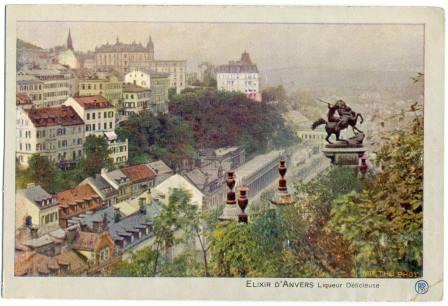 RPH 1034 Miethe Naturfarben Böhmische Bäder Karlsbad, Panorama |
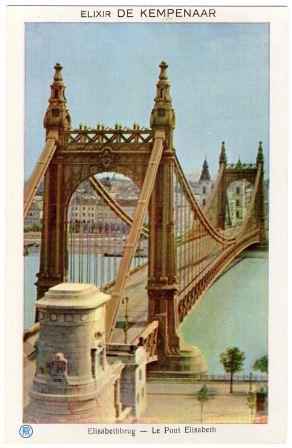 RPH 1037 Miethe Naturfarben Budapest, Elisabethbrücke |
Photographers
Although the majority of photos within the RPH series cannot be credited to a particular studio or photographer, there are some well know exceptions. For example, Reutlinger is found in the early stage performer postcards, such as the card of Elise de Vère at Serie 87 7629. While the postcard does not carry the imprint "Reutlinger," the image matches to a photo in the Reutlinger albums at gallica.bnf.fr. Similarly, H. Manuel's work also appears on a handful of credited cards in series 513, 2227, and 2336.More frequently found within the RPH series, is the work of Heinrich Traut (1857-1940). More than 100 credited Traut series appear in the RPH catalogs, with the majority found in the 300-800's. His photos are particularly striking, almost organic in appearance. Internet resources relating to Traut's work are limited, but Judith Biewer and Robert Wollard's Atelier Heinrich Traut was released in 2010 and is available for .pdf download. More information can be found at henrytraut.com.
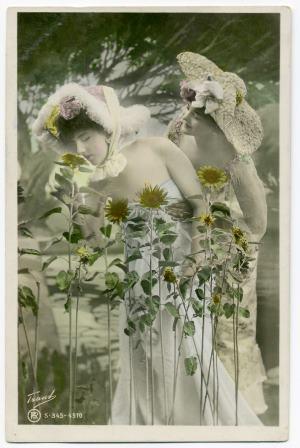 RPH S 345-4510 Signed Traut |
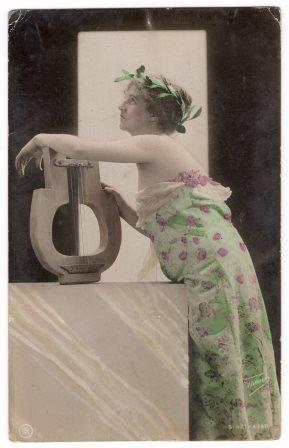 RPH S 421-4941 Signed Traut |
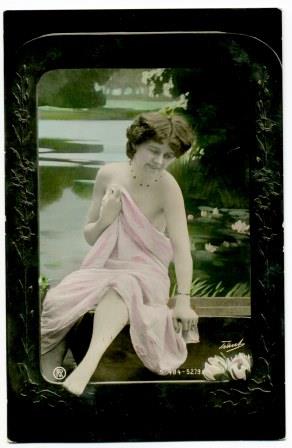 RPH S 484-5279 Signed Traut |
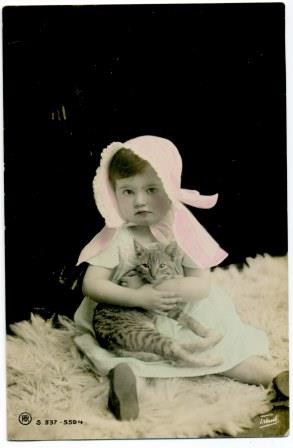 RPH S 537-5594 Signed Traut |
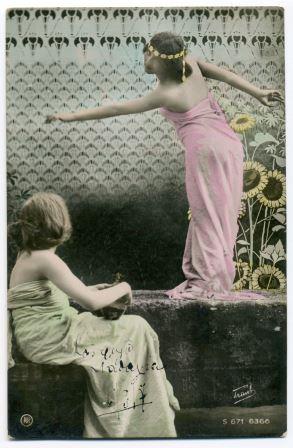 RPH S 671-6366 Signed Traut |
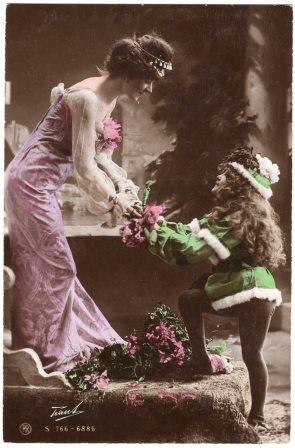 RPH S 766-6886 Signed Traut |
Evidence of the work of Ernst Schneider and his studio is found throughout the series. As early as series 622, the model, the pose, and the accessories all strongly suggest a photo from the 1907 Die Gestalt des Menschen und ihre Schönheit by Otto Schmidt and Ernst Schneider. At the other end of the number range, series 7237 is credited to Schneider on the card itself. Between the two, there are frequent signs of Schneider's work, including a few other series where the attribution appears on the card itself; several series where the name "Schneider" is scribbled into the photo's background; a number of series where the photographic card's image matches an art card signed by E. Schneider; and a number of series where the postcard's photo matches to a credited photo in a period magazine. Also suggesting Schneider's work is the connection of Wally (who appears on almost 300 RPH series) to Schneider in a Leslie-Judge portrait folio circa 1913: "She is now engaged by Ernst Schneider, the foremost German photographer, and poses every day for twenty or thirty photographs."
 RPH S 622-6082 Left: Die Gestalt des Menschen... By Schmidt & Schneider |
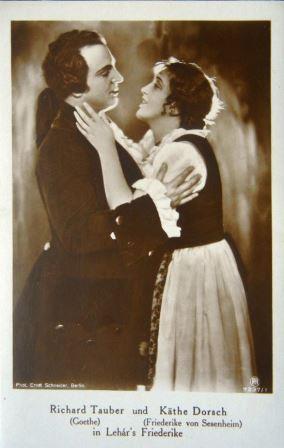 RPH 7237/1 Phot. Ernst Schneider |
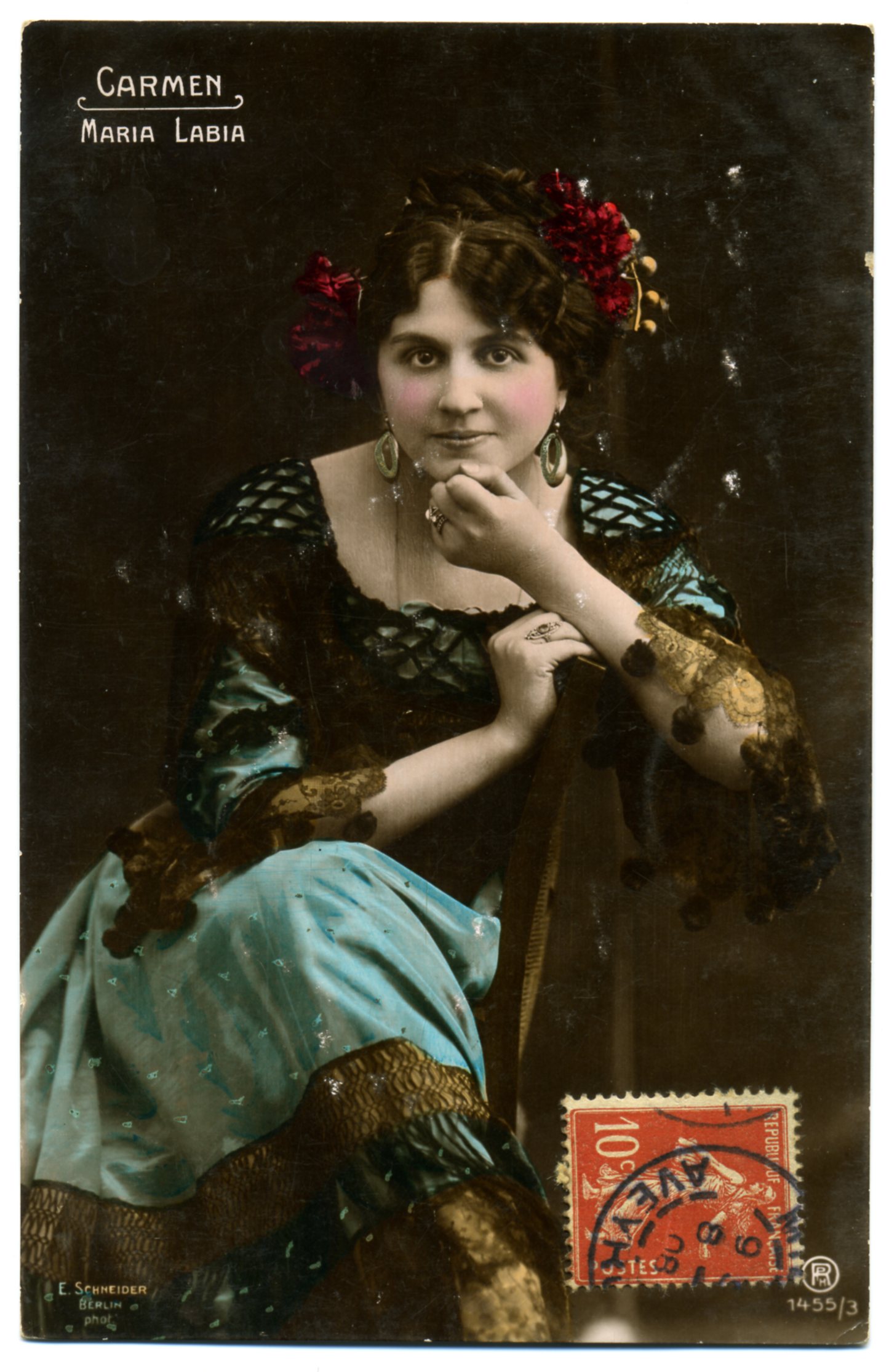 RPH 1455/3 E. Schneider, Berlin Phot. |
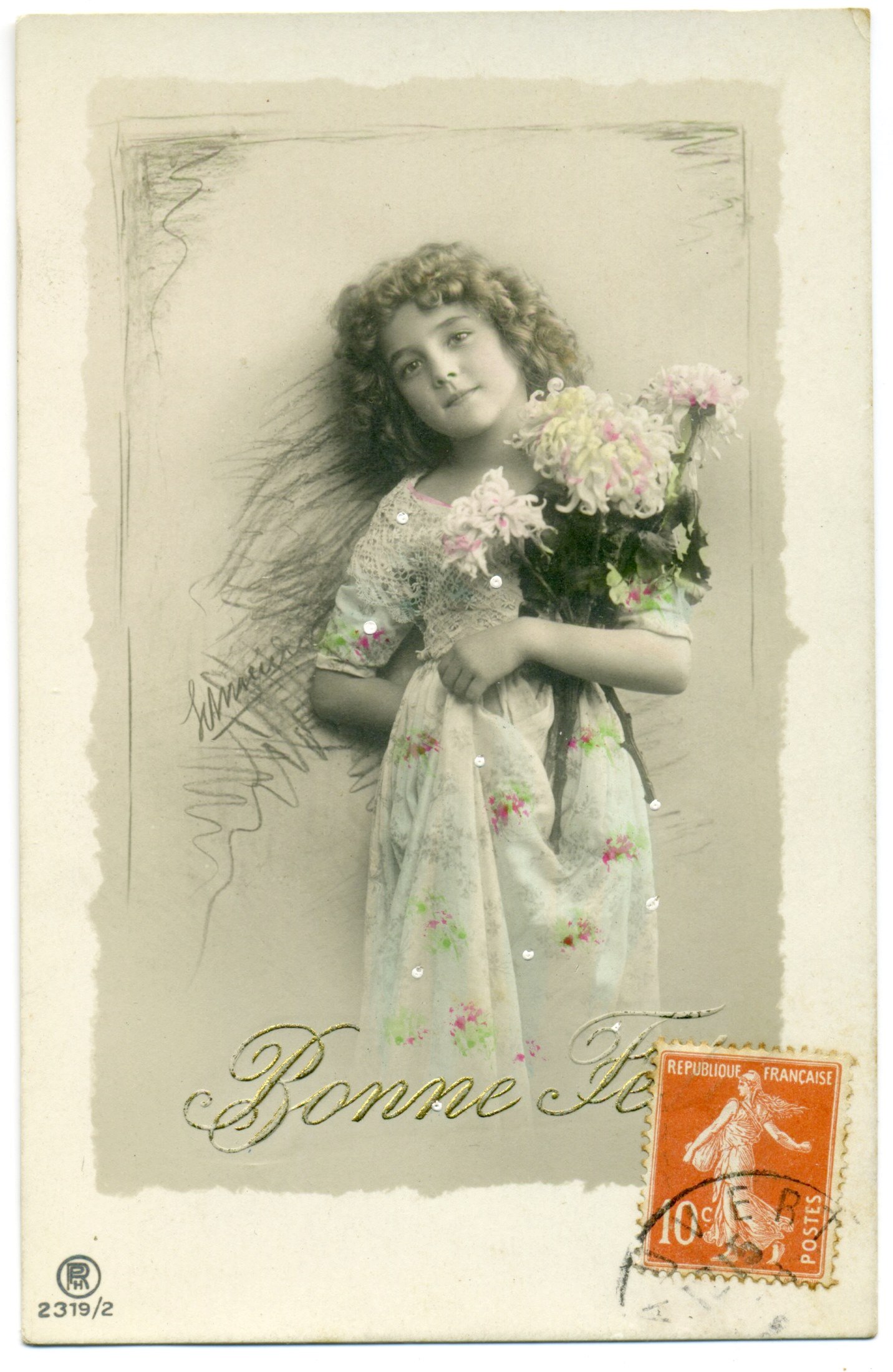 RPH 2319/2 Schneider Scribble |
 RPH 4937/6 Art Card: Amag Kunst 197 Signed E. Schneider |
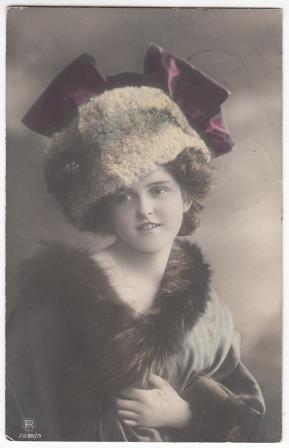 RPH 2239/3 Wally Die Woche - 1909 Num. 39 |
Language Distribution
Rotophot's postcards were marketed and sold worldwide. Many of the series, especially those issued during the holidays, were released bearing a text greeting. Multiple languages are represented by the greetings, proving the popularity and distribution of the cards. The text may have been applied by Rotophot itself, or added after market by an end distributor. It is not uncommon for a series to have been issued in multiple languages.
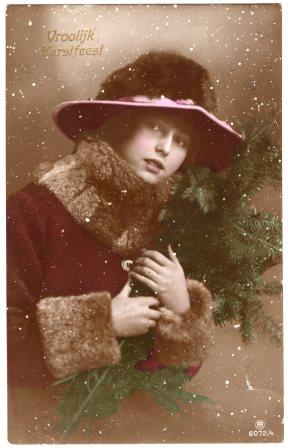 > >RPH 6072/4 Dutch Vroolijk Kerstfeest |
 RPH 1679/3 English A Happy Christmas |
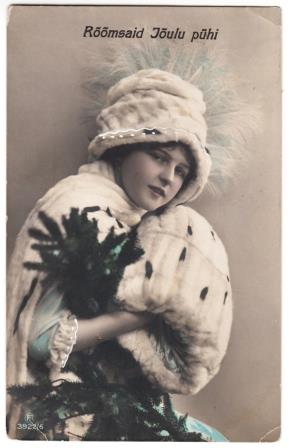 RPH 3922/2 Estonian Rõõmsaid Jõulu pühi |
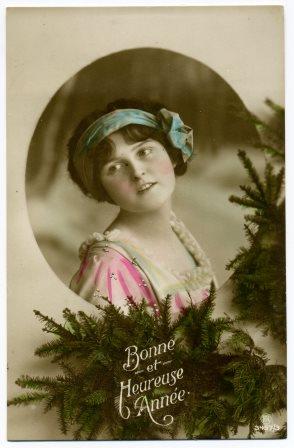 RPH 3457/3 French Bonne et Heureuse Année |
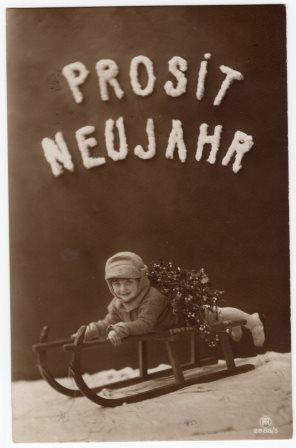 RPH 2988/5 German Prosit Neujahr |
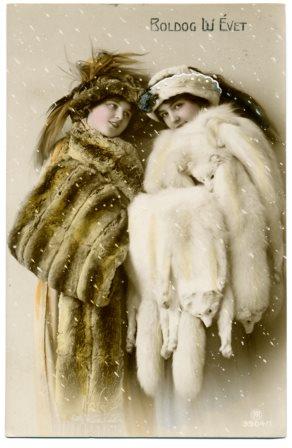 RPH 3904/1 Hungarian Boldog uj Évet |
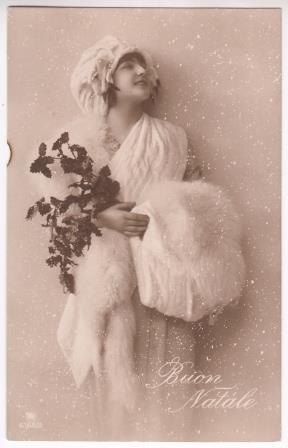 RPH 6168/2 Italian Buon Natale |
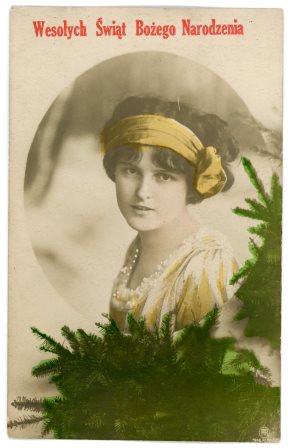 RPH 3457/6 Polish Wesolych Świąt Bożego Narodzenia |
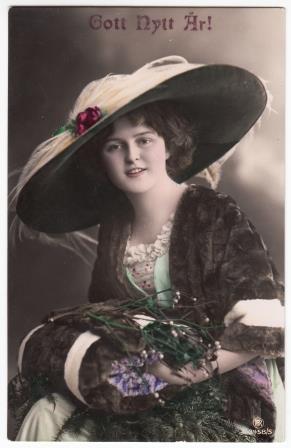 RPH 3458/5 Swedish Gott Nytt År! |
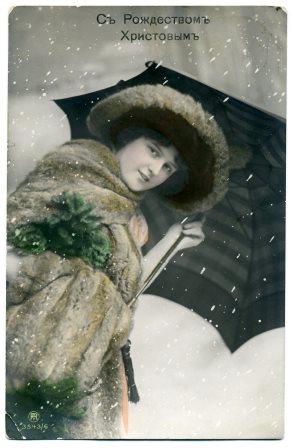 > >RPH 3543/6 Russian Съ Рождествомъ Христо́вымъ |
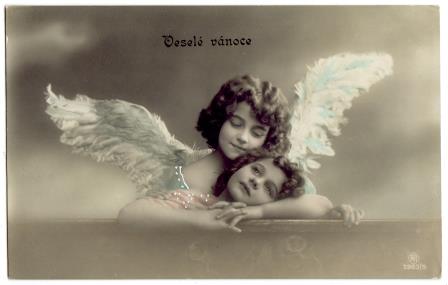 RPH 2963/5 Slovak Veselé Vánoce |
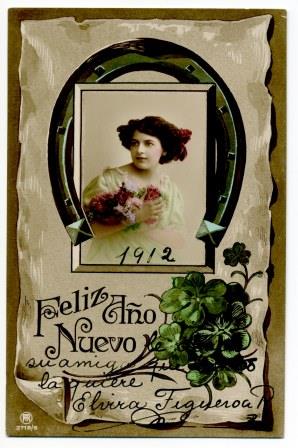 RPH 2719/5 Spanish Feliz Año Nuevo |
Dating Rotophot Series
Within the numeric RPH series, cards with a Christmas or New Years theme help identify the year in which series were issued. Some of the series are marked with the year, which facilitates dating. Many series, however, have an obvious holiday theme, but are not marked with a year. In those cases, years are assumed by the progression of cards from Easter to Christmas to New Years, and then confirmed by postmarks where possible. This method of assigning dates is subject to error, and is more likely to be accurate in the mid-range of years than in the earliest and latest years.
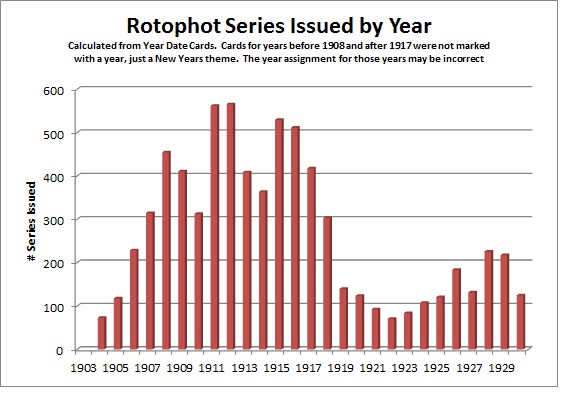 # Series Issued by Year |
 First Known Series RPH Serie 52 2013 Undivided Back - No Postmark (Earliest postmark seen for series - 1902) |
 1902 RPH Serie 61 2073 Non-Holiday Card - April 1902 Postmark |
 1903 RPH Serie 77 2137 Unused - No Postmark |
 1904 RPH Serie 150 3320 Postmark Unknown |
 1905 RPH S 268-4028 Postmarked December 30, 1904 |
 1906 RPH S 497-5362 Postmarked February 11, 1906 |
 1907 RPH S 812-7117 Postmarked December 30, 1906 |
 1908 RPH 1267/5 |
 1909 RPH 1678/6 |
 1910 RPH 1991/? |
 1911 RPH 2553/5 |
 1912 RPH 3119/1 |
 1913 RPH 3528/4 |
 1914 RPH 3892/6 Message Marked December 31, 1913 |
 1915 RPH 4422/2 |
 1916 RPH 5033/6 Postmarked January 1916 |
 1917 RPH 5352/2 |
 1918 RPH 5656/2 Message Marked January 1, 1918 |
 1919 RPH 5796/2 Message Marked 1919 |
 1920 RPH 5920/3 Postmarked December 31, 1919 |
 1921 RPH 6013/3 Postmarked December 31, 1920 |
 1922 RPH 6084/2 Postmarked January 1, 1922 |
 1923 RPH 6168/2 Unknown Postmark |
 1924 RPH 6276/6 Message Dated December 31, 1923 |
 1925 RPH 6397/6 Postmark Illegible |
 1926 RPH 6581/2 Postmarked December 31, 1925 |
 1927 RPH 6713/2 Postmarked December 30, 1926 |
 1928 RPH 6939/3 Unused |
 1929 RPH 7157/3 Postmarked December 31, 1928 |
 1930 RPH 7282/1 Postmark Illegible |
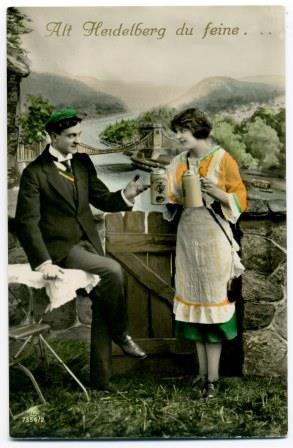 Last Known Series RPH 7356/2 Unused |
Rotophot A.G discontinued its bromide photo printing business on 26 November 1929 The Postcard Album #27 Helmfried Luers, editor |
A Note From the Cataloger - Jean Ritsema:
I'm a postcard collector from Jackson, Michigan USA, whose first cataloging project was at the age of three, keeping my paper dolls in order. Soon after starting my collection of Rotophot Berlin postcards, I noticed the cryptic little number at the bottom of the cards. When I realized those numbers represented a sequential progression of the cards, my need for order took over, and I began to compile a digital catalog of the postcards in my collection. My interest in the project grew as I began to see patterns within the images. Soon, I was scouring internet sales and auctions for RPH images and pestering internet friends and acquaintances for scans of cards they owned.
Having cataloged the digital images for the Ross Verlag Movie Star Postcard website, I asked Mark Goffee, the site editor, if he would be interested in hosting the Rotophot images. Mark generously said "Yes," and the on-line availabilty of the image catalogs has become a reality.
Mark, Helmfried Luers (The Postcard Album), Paul English (Gladys Cooper Postcards), Anna Efird (Decorables Postcards), Helen Adair Macgregor (Squirrel Postcards), Crystal Glantz (Collector Extraordinaire), and Hannu Varus (Traut Specialist) have all generously provided images and their expertise toward the completion of this project. I have provided the obsessive cataloging behavior.
Finally, thanks to those who have sent missing images for the digital catalogs since their release, including David Schofield, Bonita B and Marcia Lynn McClure.